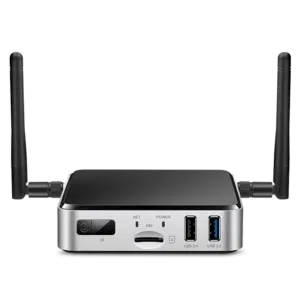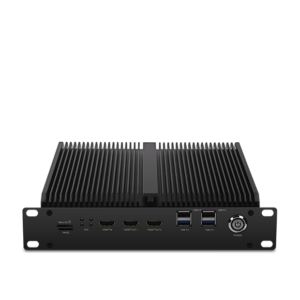The Impact of Operating AI on Side Devices
The Impact of Operating AI on Side Devices
Blog Article
Unlocking the Power of AI on Edge Devices
Real-World Applications of AI on Side Products
Synthetic intelligence (AI) is no longer restricted to the world of big, centralized information centers. Thanks to breakthroughs in engineering, edge devices today enjoy an integral position in deploying AI straight wherever data is generated. But what does AI on side products mean, and how come it creating this kind of hype? Here, we'll discover how edge ai platform works in the real world through edge devices and reveal their wide selection of sensible applications.

What is AI on Edge Units?
AI on edge units describes deploying synthetic intelligence methods entirely on products like smartphones, cameras, drones, or IoT sensors. These units do not need access to centralized machines for running information; alternatively, they perform evaluation and choices domestically, making the process quicker, better, and frequently more secure.
The "edge" here simply identifies research done near to or at the source of information technology, rather than counting on the cloud. That change is driven by the requirements for real-time knowledge running and the requirement to reduce latency, increase solitude, and lower bandwidth usage.
Essential Real-World Purposes of Side AI
1. Wise Surveillance
AI-powered cameras designed with facial acceptance, action detection, and anomaly recognition are transforming surveillance systems. Edge products in that domain can analyze movie streams in real-time to identify dubious activities, remove fake alerts, and enhance public safety. As an example, AI methods can find unusual activities and alert authorities immediately without the necessity to send movie information to a main machine for analysis.
2. Healthcare Monitoring
Wearable units and portable medical gear are leveraging ai m.2 module for controlling health data more efficiently. Edge-based AI in products like health trackers and smartwatches screens users' vitals, such as for example heartbeat, oxygen levels, or blood pressure, in real-time. These systems analyze data domestically and provide immediate feedback, paving the way in which for quicker intervention throughout emergencies.
Beyond wearables, sophisticated medical imaging units designed with on-device AI may find signals of disorders like cancer, allowing earlier in the day diagnoses even yet in distant parts without internet connectivity.
3. Autonomous Vehicles
Self-driving vehicles are among the absolute most well-known types of edge AI in action. With devices, cameras, and LiDAR techniques serving as knowledge places, AI computations get position onboard these cars to make split-second decisions. From detecting pedestrians and obstacles to moving city roads, side AI guarantees that the automobile runs easily and efficiently. The real-time processing convenience of side products reduces the reliance on high-latency cloud methods, ensuring security in life-critical scenarios.
4. Retail Analytics
Edge products in retail situations are helping firms analyze customer behavior. Smart racks and AI-equipped cameras can identify client tastes, monitor catalog, and actually modify in-store experiences in actual time. The data generated from these devices helps merchants make knowledgeable conclusions, increase customer satisfaction, and enhance stock management.

5. Industrial IoT
Factories and industrial flowers are adopting edge AI to revolutionize their checking and automation processes. AI-powered devices on machinery discover possible problems well before they result in expensive failures. Predictive maintenance driven by side AI reduces downtime, improves output, and ensures safety on the production floor.
6. Customized Activities in Consumer Devices
Your smartphone is a prime exemplory case of how side AI personalizes individual experiences. Features such as for example voice personnel, flexible camera adjustments, and on-device language interpretation use real-time AI to respond to person needs without giving sensitive and painful data to external servers. That fosters equally comfort and solitude for the conclusion user.
The Rising Influence of Edge AI
The adoption of AI on edge units continues to surge, pushed by industries' raising demand for low-latency, real-time computing, and greater information privacy. Their programs are reshaping industries ranging from healthcare and automotive to public protection and retail. By putting AI's power nearer to wherever knowledge is made, edge units aren't just increasing effectiveness but in addition showing the countless potential of creativity in the present attached world. Report this page